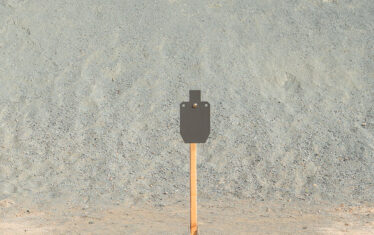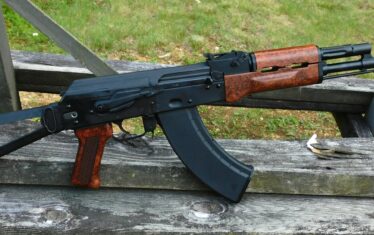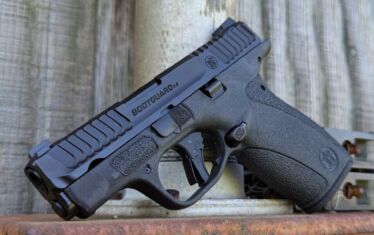The idea of modularity has overwhelmingly conquered the world of modern gun design, and for good reason. The end-user should be able to swap every part of their firearm without a lot of drama. This idea extends to most rifles, handguns, and shotguns from their stocks to the tips of their barrels. Today we are focusing on barrels, explaining the many different muzzle devices on the market that aim to make your gun perfect for your use case.
There are a few different types of muzzle devices, and each offers several advantages. The subtle differences between the various muzzle devices can significantly affect how your gun handles and functions. These different muzzle devices can apply to multiple platforms, with rifles taking a clean sweep at most muzzle devices. So let’s dive in and see how even the tip matters.
Flash Hiders
Flash hiders are fairly common muzzle devices designed to do precisely what they are named for. They hide flash. These muzzle devices aren’t intended to hide muzzle flash from people on the wrong end of the gun but for the person firing the gun. One of the most popular and effective flash hiders is the classic A2 muzzle device.
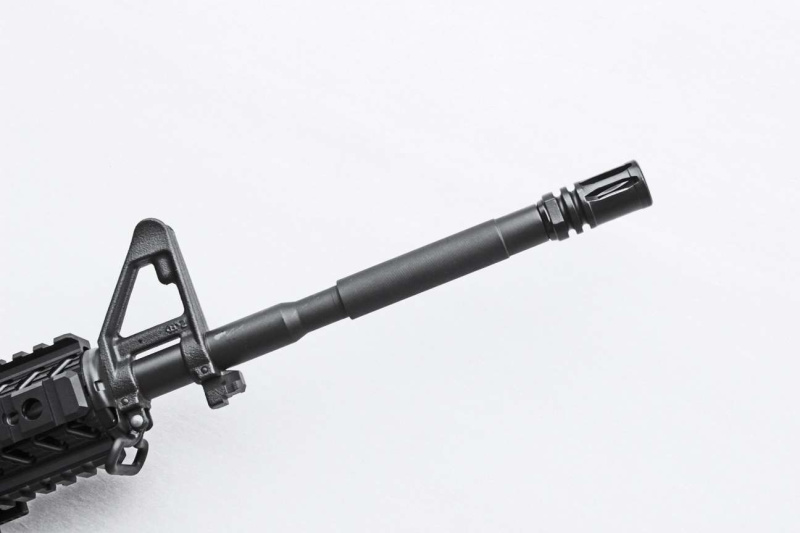
This allows the shooter to avoid muzzle flash and maintain better overall vision. In the dark, a flash hider can be a super handy thing to have. Muzzle flash can be distracting, annoying, and detrimental to your situational awareness. For this reason, they are the most popular choice for military and police rifles.
Flash hiders can be pretty handy on rifles with short barrels. Certain cartridges, like 5.56, are designed for specific barrel lengths. Anything shorter than that can create excess flash, and a flash hider can help with that extra brightness level.
On top of flash hiders, we also have flash cans. On an exceptionally short barrel, a flash can captures the flash and propels it forward. Flash cans are popular on super short barrels and certainly make shooting rifle rounds through a short barrel more comfortable. If you look at modern flash-based muzzle devices, these seem new, but the flash can has been around since the Lee-Enfield Rifle No. 5 Mk I.
Muzzle Brake
A muzzle brake is a device that attaches to the end of the muzzle and aims to reduce recoil. Muzzle brakes first showed up on artillery weapons, followed by anti-tank guns and eventually tanks. The idea began being applied to rifles quite successfully. The idea is pretty simple. A muzzle brake features a series of ports on the side of the muzzle device.
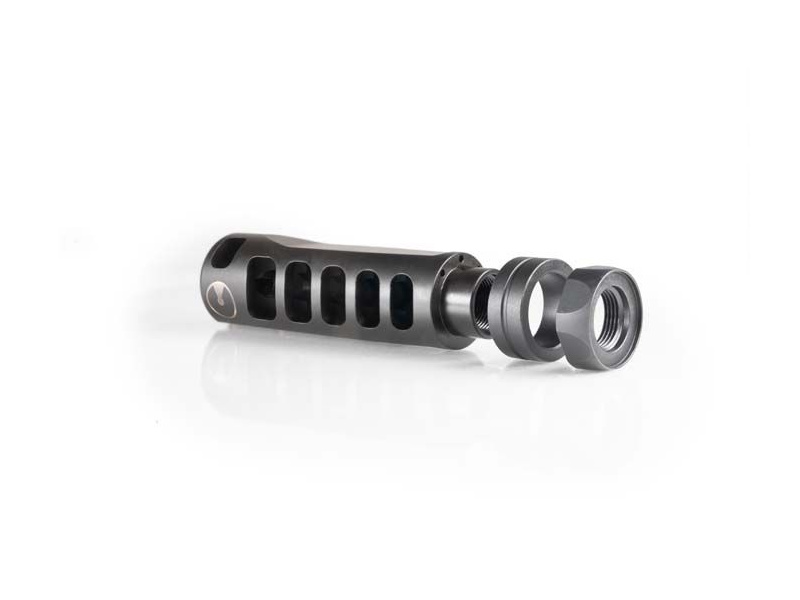
When a cartridge is fired, it creates a gas that propels the round down the barrel and ultimately downrange. With a muzzle brake, the gas hits the side ports, and when it hits these ports, it presses the gun forward. This creates an impulse that resists the rearward recoil of the gun. Other muzzle brakes offer different levels of recoil control, depending on lengths and cartridges fired.
These muzzle devices can make a gun like a .338 Lapua a decently tame kitten. Gun designs like the Barrett .50 caliber rifles have significantly reduced recoil due to the presence of a muzzle brake. If your shoulder is tired of getting beat up, then a muzzle brake might be the way to go.
Compensators
Compensators work a bit like muzzle brakes. They aim to redirect gas created by a fired cartridge. Instead of creating a braking effect via ports on the side, though, the gas is directed upwards. The idea isn’t to reduce recoil but to reduce muzzle rise.
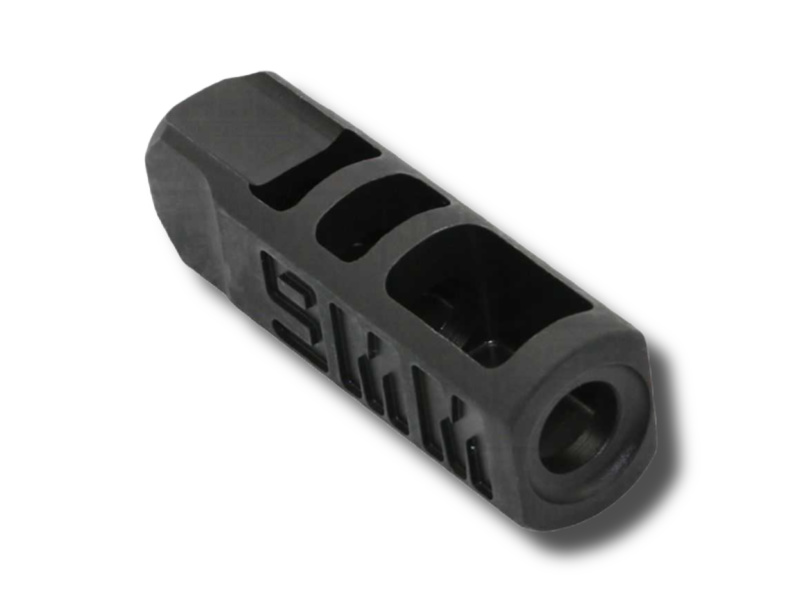
Whenever you fire a gun, the recoil is directed rearward and upward. The upward effect of recoil drives your sights up and off-target. A muzzle compensator redirects gas upward to drive the muzzle downward. This creates less muzzle rise and allows the shooter to recover faster and make quicker, more accurate follow-up shots.
Compensators are common on rifles, especially semi-auto rifles. They’ve also had considerable acceptance on handgun platforms. Comped handguns are downright common these days.

Another alternative to compensators is porting. Orting makes cuts inside the top of the barrel to reduce muzzle rise. This is fairly common with handguns and can be an aftermarket addition to shotguns by companies like Van Comp.
Linear Compensators
Linear compensators are interesting pieces of gear. They are not compensators in the traditional sense. Linear compensators are muzzle devices that really excel on short-barreled guns firing rifle calibers. Linear compensators direct blast and muzzle flash forward.
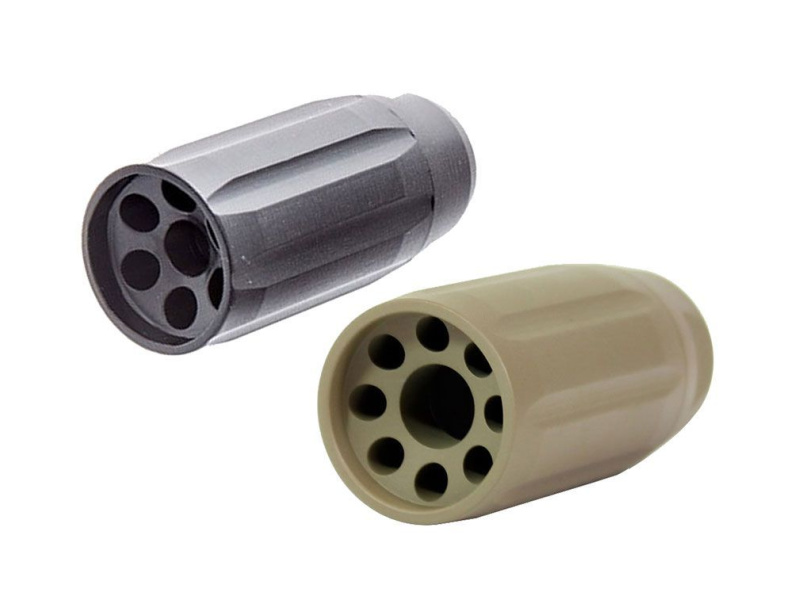
This creates a device that makes shooting short-barreled guns much more comfortable for the end user. It doesn’t reduce noise or flash but simply directs it forward. This doesn’t necessarily reduce recoil or muzzle rise, just a more enjoyable experience for the end-user.
Hybrids
Hybrid devices often mix one factor from one of the above with another. This creates devices that work as compensators and muzzle brakes, flash hiders and compensators, etc. The downside is that hybrids typically don’t work as well as purpose-built muzzle devices.
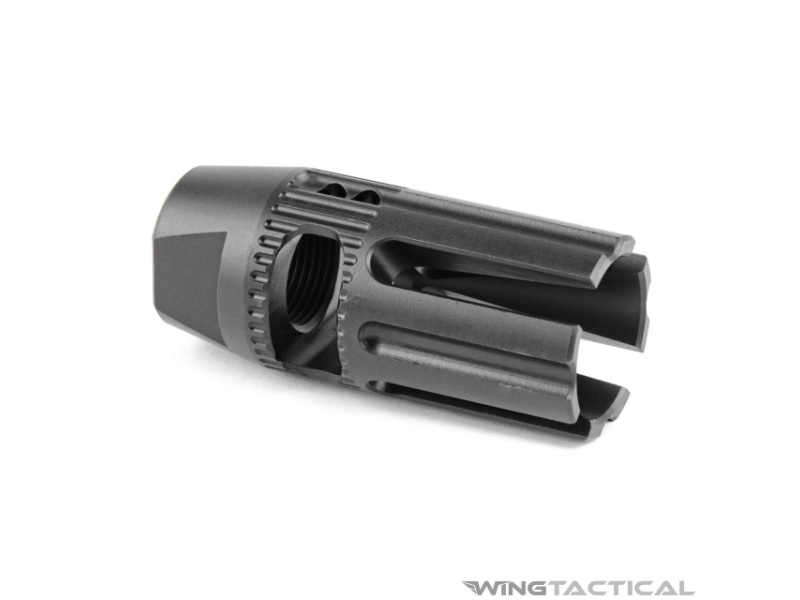
A dedicated muzzle brake will reduce recoil more than a hybrid muzzle brake and compensator. Hybrid devices tend to be very popular for semi-automatic rifles chambering an intermediate cartridge.
Suppressors
Finally, when you want the most performance out of your muzzle devices, you need a suppressor. Suppressors famously reduce the overall noise of a gunshot. Suppressors do more than that, though. The same baffles that help dampen noise also help reduce recoil and act almost like muzzle brakes. At the same time, the flash is almost entirely contained to the gun, making it a very effective flash hider.

The downside is that suppressors add a fair amount of length to your firearm and come with a heavy-duty price point, backed by an ATF tax stamp and a maze of state and federal laws to abide by. Even so, if you want the best muzzle devices on the market, then suppressors will be your go-to.
Muzzle Devices for Everyone
Choosing the right muzzle device can completely change how your gun handles. Some firearms benefit from certain types of devices more than others, and it’s up to you to find the best bang for your buck.
I tend to be a fan of porting on shotguns, compensators on handguns, hybrid devices on intermediate rifles, compensators on PCCs, and brakes on powerful rifles. If possible, suppressing everything. That’s my preference, but what’s yours? Let me know below!

